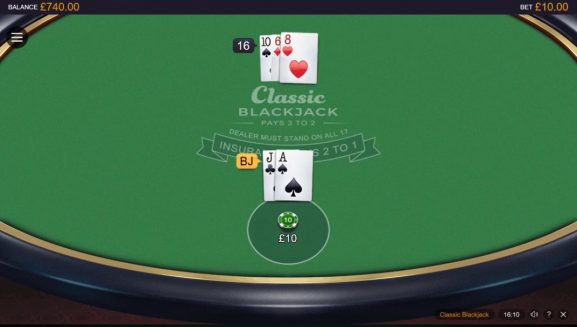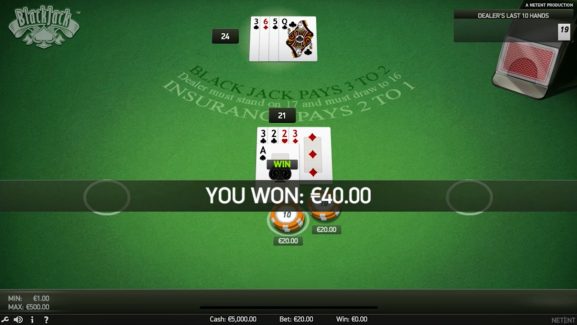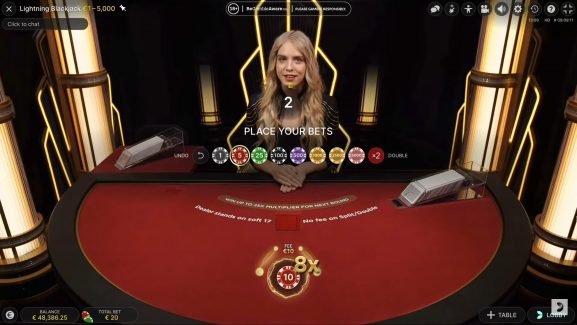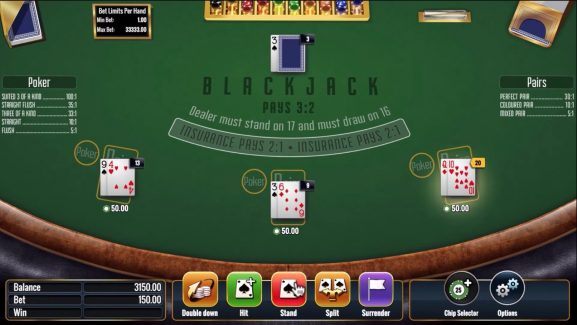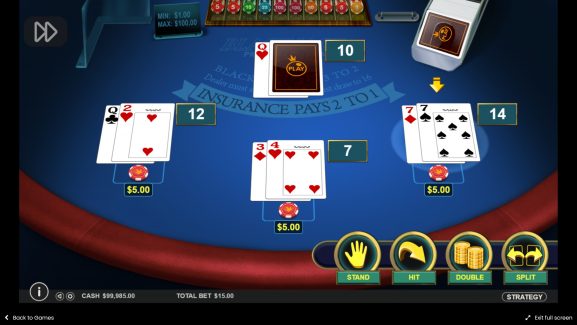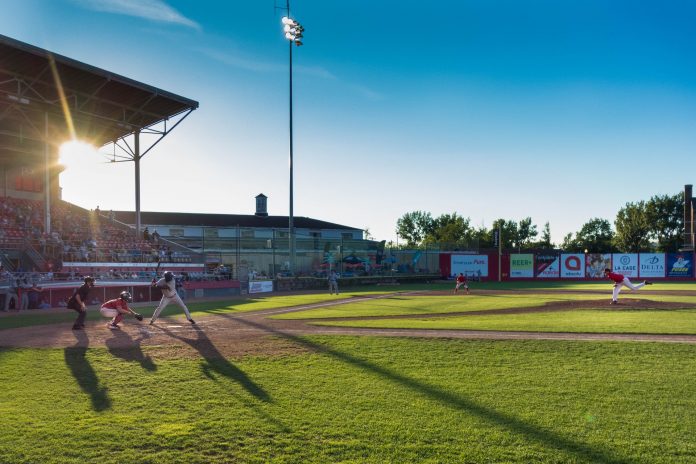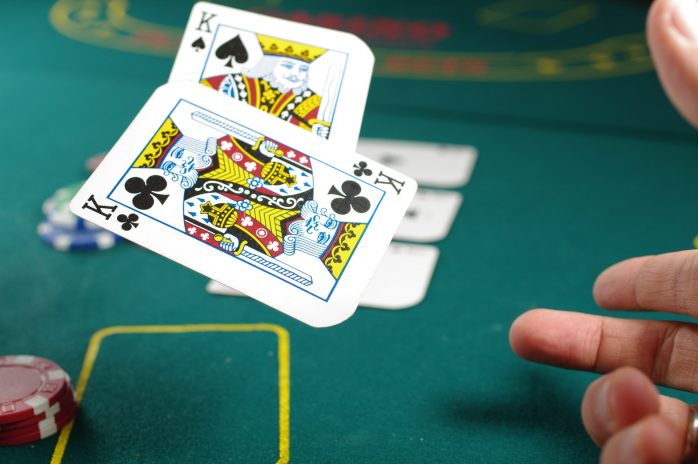How to Play Online Blackjack
Blackjack is known as a table game, as it pits players against the house, as opposed to each other. It’s typically played with 2-7 players, who take it in turn to place bets and make calls about their hands. Players place their bets before their hands have been dealt.
The aim of blackjack is to attain a hand as close to 21 as possible, without exceeding 21. A hand’s value is the sum of its cards’ value, and players that exceed 21 are bust and take no further part in the round. Cards 2-10 hold their face value, while face cards (jacks, queens and kings) are each worth ten. Players choose whether aces in their hand are worth one or 11. Hands where aces are worth 11 are known as soft hands; hands where aces are worth one are known as hard hands.
At the beginning of a round, each player is dealt two upcards, before the dealer is dealt one upcard and one downcard. Depending on the casino’s rules, the nature of these deals may deviate slightly, but any changes are inconsequential – this is because the dealer’s hand always plays out in front of all players at the end of the round, no matter which rules the casino applies.
Once players have received their first two cards, they typically have four options:
- Hit: players seek to improve their hand by receiving an additional upcard;
- Stick/stand: players are satisfied with their hand and take no more cards;
- Double down: players double their initial bet in exchange for committing to a stick call after receiving precisely one more upcard;
- Split: if a player’s first two cards are of the same value, they can split them into two separate hands. A second bet matching the initial bet is placed behind the split hand. Additional upcards are then dealt to the two split hands, which play out in turn. At most online casinos, all cards with a value of ten qualify as being eligible for a split call, i.e., players can split with a ten and a king, for example.
When all players have completed their hands, the dealer plays their hand in front of the table. If everyone has either busted or received a blackjack, the dealer will not play their hand. The term blackjack referred originally to a hand consisting of the ace of spades and one of the black jacks, but modern blackjack games have softened the conditions to include any ace and any ten-value card.
The player with the hand closest to 21 wins their bet. If the dealer doesn’t have a blackjack but the player does, the player wins their bet and may receive a bonus – this bonus might be dependent on the strength of the blackjack, i.e. the ace and jack of spades is a stronger blackjack than an ace and a ten. If a player’s hand is equal to the dealer’s, the player will receive their stake back.
And if a player busts, the player loses, even if the dealer also busts – this rule ensures the casino’s moderate house edge of 0.17%, meaning that, on average, and over an extended period of time, the casino can expect to retain $17 out of every $100 it takes on blackjack games. However, this figure changes depending on how many decks are in play at the blackjack table.















